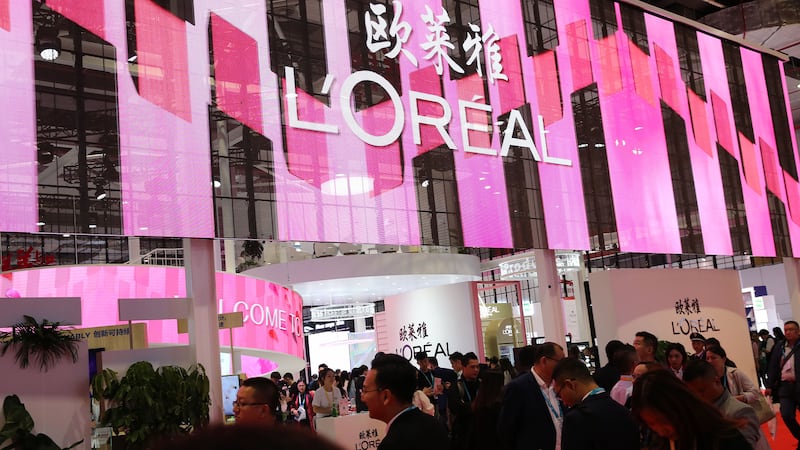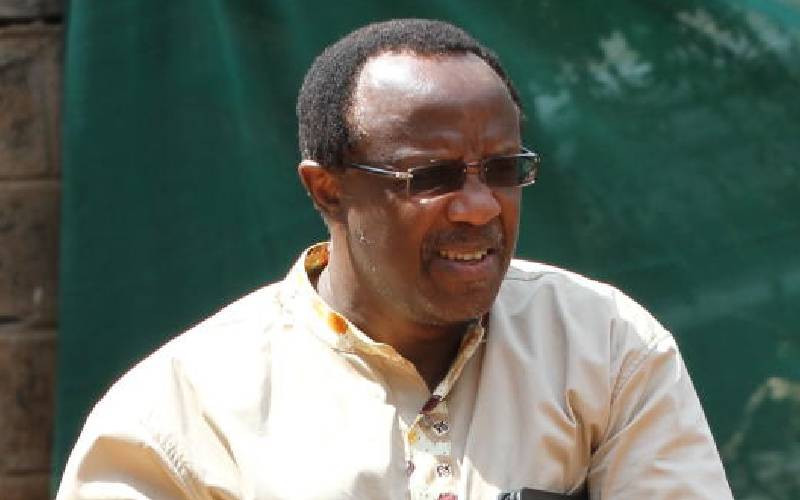It’s safe to say fashion’s dealmaking drought is over.
On Thursday, Dick’s Sporting Goods and Foot Locker announced an agreement for Dick’s to buy Foot Locker for roughly $2.4 billion. Dick’s offered $24 a share for the sneaker retailer, a premium of 86 percent.
The acquisition came little more than a week after Skechers’ $9.4 billion buyout by 3G, a Brazilian private-equity firm, and a month after Prada bought Versace for $1.25 billion.
All three deals are blockbusters by any standard. But the latest could prove to be the most consequential for the industry, as it would create an imposing new force in the global sneaker market.
Separately, Dick’s and Foot Locker were already major players in activewear. In the fiscal year ending Feb. 1, Dick’s brought in $13.4 billion in revenue, though much of that came from equipment, ranging from footballs to kayaks. Foot Locker, meanwhile, reported just under $8 billion in its most recent fiscal year, with the vast majority of sales coming from sneakers. That makes Foot Locker a dominant retailer in that category globally (it operates in 26 countries), but far smaller than some of the brands it carries, namely Nike and Adidas.
Investor reactions have been mixed. Foot Locker’s stock is up about 80 percent since the Wall Street Journal‘s report on Wednesday that the companies were near a deal, but shares in Dick’s are down more than 10 percent. Cowen analyst John Kernan called the deal a “strategic mistake” for Dick’s and a “misallocation of capital” in a note published Thursday.
The two companies said their businesses are more complementary than competitive and won’t cannibalise each other. Dick’s is centred on sporting goods, performance-focused shoppers and suburban families, Foot Locker on stylish casual products and sneakerheads in urban areas. Both will expand their reach; both will be better partners for brands like Nike whose products they sell; and both will gain scale leading to greater operational efficiency.
But there are major risks along with the opportunities. While Dick’s has grown steadily in recent years, Foot Locker has struggled. Dick’s is making its move at a time when economists worry US consumer spending is about to slow as tariffs drive up prices. It’s a big bet to take right now — on Foot Locker and the US economy.

Buying Foot Locker enmeshes Dick’s in the challenges of trend-driven fashion and the streetwear market, which has cooled in recent years. Dick’s, which is used to competing with retailers like Walmart on price or REI on utility, is now playing in the same space as boutique retailers like Kith that carry outsized influence.
There’s also the Nike question. Foot Locker purchased 59 percent of its total merchandise from the brand last year, and will raise Dick’s exposure to 38 percent, from 24 percent of inventory purchases, according to Kernan. That means Nike’s problems — its flagging retro sneaker business and challenges in categories like performance running — are now Dick’s problems, too.

At the price Dick’s paid, it could have used the money on other opportunities that offer lower risk and, in Kernan’s view, higher return on capital, like its immersive House of Sport stores, which have fuelled Dick’s strength within sporting goods since it introduced the concept in 2021. They’re packed with products like baseball bats and hockey helmets that never go out of style, and on the company’s earnings call in March, Dick’s president and chief executive Lauren Hobart said shoppers at those locations spend more time and money than the typical Dick’s customer.
On the other hand, with such firm footing in sports gear, Dick’s is free to devote more attention to what it sees as a future growth driver: footwear. Dick’s has a strong apparel business, anchored by its successful private labels, and has been working to build its presence in footwear, which accounted for 28 percent of sales last year. Foot Locker’s expertise is in sneakers, and apparel is where it needs assistance. Foot Locker does have a large number of stores, but many are in locations Dick’s doesn’t otherwise reach, and Foot Locker would broaden Dick’s customer base, both among fashion consumers and internationally, as Foot Locker does about one-third of sales outside the US.
Joining forces also gives them scale in a variety of ways. If Nike can enact a turnaround, for example, Dick’s and Foot Locker could gain even more together.
“One of the most important reasons for the deal, we believe, was that it further strengthens their relationship with brand partners, and essentially gives the combined entity more leverage in negotiating the best product,” Nikic wrote in a note following the deal’s announcement.
Of course, all of this is taking place against the backdrop of Donald Trump’s tariffs and the widespread uncertainty from his policy vacillations. So far, consumers in the US have kept shopping, but it’s uncertain how long that may continue. On Thursday, the US commerce department reported that retail sales ticked up just 0.1 percent in April, suggesting shoppers may be starting to pull back. Price hikes from tariffs — the most drastic of which are only on pause and target fashion hubs like China and Vietnam — are expected to take months to fully settle in. Walmart said on Thursday that it would start to raise prices this month and in the early summer.
If consumers cut back, discretionary items like fashion and sneakers could be on the chopping block.
But Dick’s seems to be betting that any economic slowdown will be short-lived, and that Foot Locker itself is near a turnaround, or that Dick’s could engineer one by stepping in. The success of the deal could ultimately come down to whether Dick’s and Foot Locker are able to execute on their vision, capitalising on the very real opportunities — and dodging the very real risks.
THE NEWS IN BRIEF
FASHION, BUSINESS AND THE ECONOMY

The US and China reached a deal to slash tariffs. The two countries will pause reciprocal tariffs for 90 days, during which tariffs will come down to a 10 percent baseline rate. Following the news, which did not cover the recently terminated de minimis tax loophole on low-value goods, the dollar rose against major currencies and markets lifted.
A Valentino unit was put under court administration for a year over labour exploitation. Workers of Chinese-owned firms in Italy that Valentino Bags Lab subcontracted production to worked days and nights, including during holidays, and were made to sleep in the workplace. Safety devices had been removed from the machinery.
Burberry cut jobs as its full-year profit swung to loss. The British luxury fashion house will cull a fifth of its workforce, or 1,700 jobs, to cut costs. First-quarter sales fell 6 percent, but beat analyst expectations.
Ferragamo’s revenues fell one percent in its first quarter, dragged by weak sales in Asia. The currently CEO-less Italian luxury group posted revenues of €221 million ($247.50 million), missing analyst expectations of €223 million.
Richemont’s sales jumped on strong demand for Cartier. The jewellery unit’s first-quarter sales jumped 11 percent, indicating the conglomerate, which also includes Van Cleef & Arpels, is more resilient than rivals like LVMH. Following the announcement, shares rose as much as 5.5 percent in early Swiss trading.
A Christian Dior couture client’s data was breached in a cyber attack. LVMH’s second biggest fashion label recently discovered an “unauthorised external party” accessed some of its customers’ data, but no financial information was compromised in the breach.
Swiss sneaker brand On lifted its sales outlook as customers snatched up the new Cloud 6. The Roger Federer-backed sportswear company now projects 2025 revenue to increase by at least 28 percent to 2.86 billion Swiss francs ($3.4 billion), slightly behind analyst expectations. First-quarter sales exceeded expectations, up 40 percent year on year.
Mytheresa reported slower sales growth. First-quarter sales grew just 4 percent to €243 million ($273 million), down 9 percent from the previous quarter, marking the end of a hot streak. Its newly-formed parent, LuxExperience, comprised of Mytheresa and Yoox Net-a-Porter, said Net-a-Porter and Mr Porter’s combined net sales are forecast to drop 11 percent to €1 billion in 2025, while Mytheresa is projected to grow 7 percent to around €900 million in 2025.
American Eagle withdrew its annual targets and wrote down its spring and summer inventory. The apparel brand took a $75 million inventory charge in the first quarter related to mark-downs of spring and summer merchandise. Shares dove 10 percent in extended trade, as American Eagle said it was “actively evaluating its forward plans.”
Birkenstock planned price hikes to offset tariffs and saw strong demand. The German shoemaker will raise prices globally to offset the US’s universal 10 percent tariff on imports, with a looming 20 percent EU rate. After strong first-quarter growth in the Americas, 2025 revenue projections were raised to the high end of its previous forecast range of 15 to 17 percent.
The Under Armour turnaround showed resilience with sales beating expectations. Fiscal fourth-quarter revenue fell 11 percent to $1.2 billion, surpassing analyst expectations of a 13 percent decline, as CEO Kevin Plank attempts to revive the company he founded after returning last year to restructure the business.
The Saks bond has suffered a $1 billion loss before a single payment has been made. The company is seeking more money to shore up finances just five months after its bondholders invested $2.2 billion in December. In February, Saks Global told vendors it would take over a year to settle unpaid bills. Also this week, Saks hired Kirkland & Ellis, PJT Partners and Bank of America Corp. to explore financing options.
A US tax bill will end duty-free imports of cheap foreign goods. House Republicans have proposed a bill to end duty-free imports of cheap foreign goods, putting the halting of the de minimis exemption into law. House leaders plan to pass the measure in the coming weeks.
Shein will set up a huge Vietnam warehouse in a US tariff hedge. The fast-fashion e-tailer has leased nearly 15 hectares of industrial land for a warehouse near Ho Chi Minh City, its first in the country. The e-commerce company also sent a price drop alert to US consumers, assuring them they wouldn’t be financially responsible for tariff-induced fees.
Kering’s CEO said the group faces a drop in US consumption. The French luxury conglomerate, which last month reported weak first-quarter sales (dragged by a 25 percent drop at Gucci), has seen a “strong” decline in US demand for its luxury and fashion goods, according to CEO François-Henri Pinault.
Kohl’s is looking to refinance just as it searches for a new CEO. The department store company, which is currently searching for a new CEO, hopes to sell $360 million of junk bonds to refinance debt due this year.
China’s JD.com beat quarterly revenue estimates. The Chinese e-commerce retailer reported total first-quarter revenue of 301.08 billion yuan ($41.82 billion), up 15.8 percent YoY, a sign that its strategy of heavy discounting and price cutting, while relying on government subsidies to drive consumption, is working.
THE BUSINESS OF BEAUTY

L’Oréal is selling $1 billion of bonds in its US market debut. The cosmetics giant is reportedly selling a 10-year deal yielding 0.63 percentage point above Treasuries in its first time borrowing in the US corporate bond market.
Shiseido’s earnings declined 8.5 percent, while Drunk Elephant’s sales slid 65 percent. Shiseido’s total first-quarter sales reached 228.2 million yen (around $1.5 billion), and the company maintained its 2025 forecast of flat growth.
Church & Dwight acquired hand sanitiser brand Touchland for $700 million. A further earn-out could bring the personal care giant’s purchase price up to $880 million. Touchland, popular among Gen-Z and Gen-Alpha, expects net sales to grow double digits in the next two years. Following the announcement, Church & Dwight’s stock rose 4 percent.
Charlotte Tilbury launched in Mexico. The beauty brand’s full collection of makeup, skincare and fragrance launched in Mexico on May 16, with plans announced for expansion into two El Palacio de Hierro locations and a travel retail concession in the summer.
Violet Grey launched a perfume label with a $1,100 fragrance. The Los Angeles-based cosmetics company debuted fragrance label Madame Grey which offers a $100 hair perfume and limited-edition $1,100 Extrait de Parfum.
Zepbound beat Wegovy in their first head-to-head trial. Eli Lilly’s Zepbound helped nearly 25 percent more participants lose over 15 percent of their weight compared to Novo Nordisk’s Wegovy. Treatment with Zepbound also achieved an average waist circumference reduction of 18.4 centimetres, beating Wegovy’s average reduction of 13 centimetres.
PEOPLE

Balenciaga named Nathalie Raynaud deputy CEO. Raynaud, who joined Kering four years ago and helped to increase Balenciaga’s leather goods sales, will report to chief executive Gianfranco Gianangeli.
MAC Cosmetics named Nicola Formichetti its global creative director. Formichetti, who will assume the position on May 19, replacing Drew Elliott after his departure in February, is known for his creative work with Diesel, Mugler and Lady Gaga’s Haus of Gaga. This is his first appointment at a beauty company.
Patrick McDowell won the Queen Elizabeth II Award for British Design. McDowell founded their eponymous, London-based brand in 2018 after graduating from Central Saint Martins. The Queen Elizabeth II Award was created in 2018 to honour trailblazing designers in sustainability and community engagement.
MEDIA AND TECHNOLOGY

The Independents acquired Terminal 9 Studios. In its second acquisition this year, the fashion PR conglomerate has acquired Paris-based documentary production company Terminal 9 Studios in hopes of bolstering its content and entertainment offerings. Founder and chief executive Claude Lacaze will remain with the company.
Compiled by Jessica Kwon.












